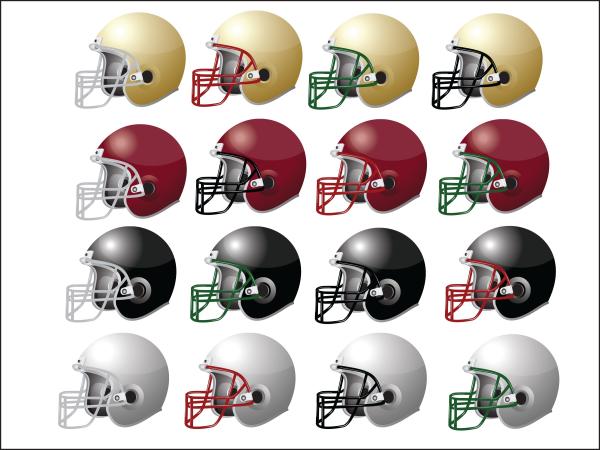Football is not the same game it was 10 years ago. Evidence over the last decade has been mounting that parts of the game are harmful to some of its players. Specifically, those who experience repeated concussions or head trauma, resulting in a type of irreversible and degenerative brain damage called chronic traumatic encephalopathy (CTE).
A new report published in the Journal of the American Medical Association (JAMA), entitled Clinicopathological Evaluation of Chronic Traumatic Encephalopathy in Players of American Football brought this issue into the spotlight this week, largely because of its splashy results.
The study reports that CTE was diagnosed in 177 players across all levels of play (87%) - a shockingly high number that caught many people's attention - including this mother of a child who idolizes Odell Beckham Jr. and is currently spending his summer playing (flag) football.
For the study, two metrics were used to diagnose CTE. First, the brain tissue was analyzed under the microscope for the formation of tell tale signs of CTE. Second, clinical evaluations were conducted using both online surveys and telephone interviews with a person who knew the deceased well (the informant). Both the interviewer and informant were blinded to the result of the CTE diagnosis when interviews were conducted.
What the study suggests is that some football players will end up with brain damage. However, the percentage of how many is still up in the air - way up in the air. I don't want to deflate this important work (I'm not Tom Brady, after all), but, any further numbers or details are yet to be determined.
The main reason for this lies in where the brain tissue that was analyzed came from - which is a brain donation program. This means that the family of football players donated their bodies after death. It is not unreasonable to assume that there was a reason to do so, for example, that their loved one was experiencing depression, mood swings or other effects of brain trauma. So, the brain samples create data that are highly skewed in the direction of people who were experiencing some symptoms of CTE. The authors even state in their paper that "caution must be used in interpreting the high frequency of CTE in this sample, and estimates of prevalence cannot be concluded or implied from this sample."
Also, the study points out that the brain bank is not representative of your average person playing football - not everyone plays at the level of the NFL. Lastly, the authors point out that their study is not representative even of all NFL players, due to the restriction of using only brains that had been donated to the brain bank.
Caveats aside, one interesting finding was that the more that someone played football, the more likely they were to have CTE. Looking at the varying levels of play, zero out of 2 players had CTE who played only pre-high school football, 3 of 14 had CTE who played high school football (21%), 48 of 53 in college (91%), 9 of 14 semiprofessional (64%), 7 of 8 Canadian Football League (88%), and 110 of 111 National Football League (99%) players. Let's say that again - over 99% of former NFL players were diagnosed with CTE.
But, CTE is controversial and even if the study was not done with strong control groups, these data are important and should promote more study into this problem.
Perhaps we should think about football and CTE like smoking and lung cancer. Only about 10% of smokers will be diagnosed with lung cancer. But, the medical community is, appropriately, anti-smoking because those are preventable, unnecessary and needless deaths. We know that not 99% of all football players get CTE. But, even if the number is 10% or 5%, and it very well may be, changes to the game should be made.
Until that time, I can safely say that these data are going to make this mother think about the next step for her son when flag football won't cut it anymore.




